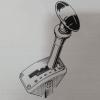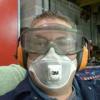Hi All,
I'm after a few ideas on the ignition box I'm using. It has a programmable timing curve vs RPM and also dwell vs RPM. My current dilemma is working out what amount of dwell is appropriate to get the best overall starting and running.
I have a 25D distributor that's been locked so there is no mechanical advance. Vacuum advance still works in addition to the rpm based advance
Accuspark electronic module (that is used to send the signal to the blackbox)
Standard 3 ohm coil
I also have a 1.5 ohm coil spare
Accuspark blackbox unit (which is capable of running a >1.5ohm coil)
The options I can think of are below:
Option 1: have a constant 60 degrees of dwell across the rev range and use the 3ohm coil the same as a points setup
Option 2: have a dwell curve from the recommended minimum of 20 degrees at idle to 70 degrees at around 5500rpm using a 3 ohm coil.
Option 3: have a dwell curve from the recommended minimum of 20 degrees at idle to 70 degrees at around 5500rpm using a 1.5 ohm coil.
My thoughts are:
Option 1: same as points and there shouldn't be any problem. 60 degrees at idle will be oversaturating the coil, and potentially it could be higher at higher RPM to keep the coil power up.
Option 2: this only seems to be of benefit up top, and would potentially make it harder to start with less dwell angle
Option 3: I believe this would give the best result for both starting and top end running? Is there a standard 4 cylinder dwell curve that's suitable?
 oZr7m2Xh.jpg 38.8K
1 downloads
oZr7m2Xh.jpg 38.8K
1 downloads
The original Accuspark instruction video used an oscilloscope to check for coil saturation at various RPM points, but they have since removed the video. I think this would ultimately be the best option, or if I knew what the optimum coil dwell time was so I could calculate the dwell angle vs rpm


















